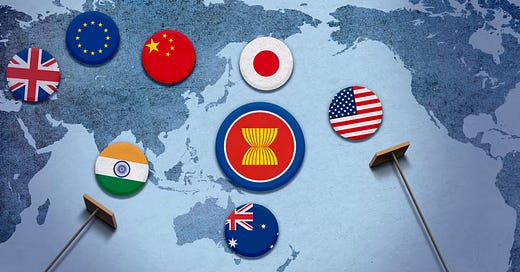ASEAN Centrality and Its Prospects
The Association of Southeast Asian States has become world famous for the apparent effectiveness of the combined economic growth of its members and its seeming ability to speak and act with one voice.
UPDATE: As the summit season in Phnom Penh advances, the Long Mekong Daily brings you a series of articles from keen observers of South East Asian and East Asian politics. Today, José E. Mora, Professor and Global Affairs Chair, American University of Phnom Penh, writes about the future of ASEAN centrality.




